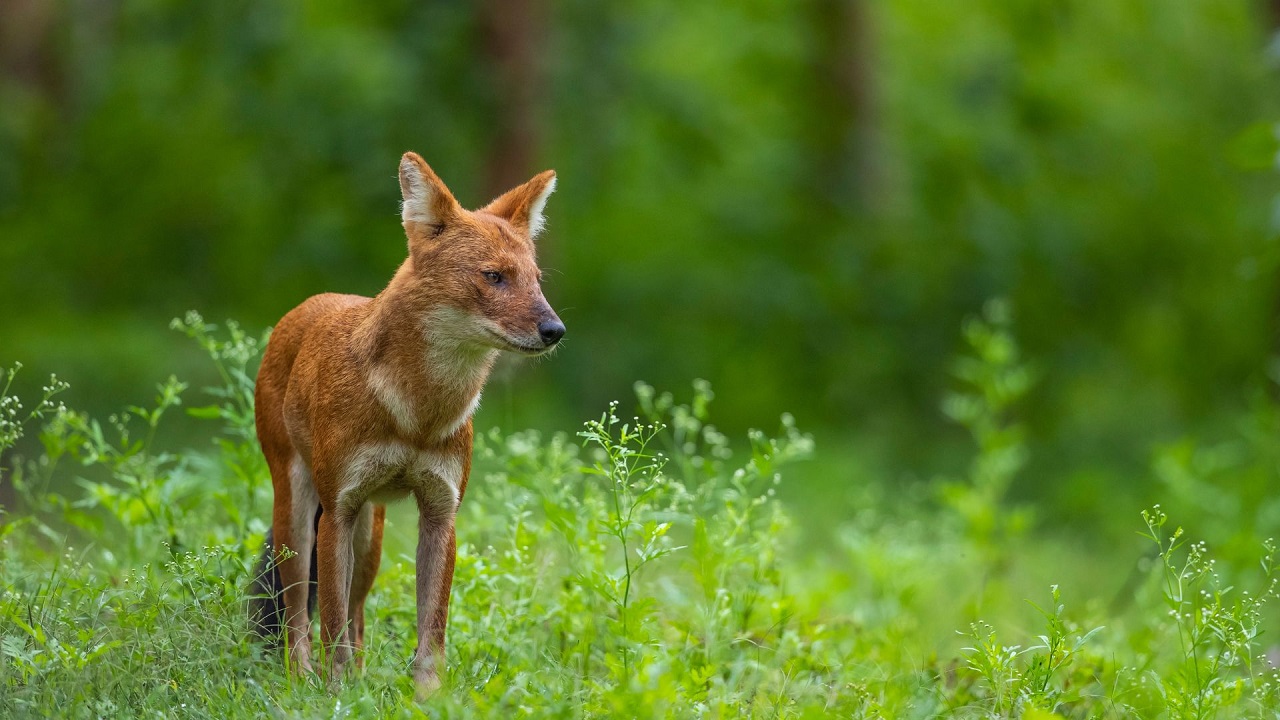Dholes in Safe Hands: Captive Breeding for a Vanishing Predator
Context :
The Indira Gandhi Zoological Park (IGZP) in Visakhapatnam has recently announced the successful birth of 14 dhole puppies, marking a significant achievement in the conservation breeding programme for this endangered species.
What is the Dhole Conservation Breeding Programme?
The Dhole Conservation Breeding Programme is a captive breeding and release initiative aimed at increasing the population of the Asiatic Wild Dog (dhole). It addresses major threats such as habitat loss, inbreeding, and lack of scientific data on the species.
-
Started in: 2014
-
Location: Indira Gandhi Zoological Park (IGZP), Visakhapatnam, Andhra Pradesh
-
Implemented by: IGZP with support from the Central Zoo Authority (CZA)
-
Technical Support: Wildlife Institute of India (WII), Dehradun, and LACONES, Hyderabad
-
Partner Zoos for Genetic Exchange:
-
Nehru Zoological Park, Hyderabad
-
Arignar Anna Zoological Park, Vandalur
-
Sri Venkateswara Zoological Park, Tirupati
-
Objectives of the Programme
-
Breed endangered dholes in captivity
-
Maintain a healthy and diverse gene pool
-
Understand dhole behaviour, social structure, and reproduction
-
Generate scientific data for long-term conservation
-
Enable future reintroduction into protected habitats
About the Dhole (Asiatic Wild Dog)
-
Scientific Name: Cuon alpinus
-
Common Names: Dhole, Asiatic Wild Dog, Indian Wild Dog
-
Physical Features: Reddish-brown coat, bushy black-tipped tail, long legs, and agile build
-
Habitat: Prefers forests, scrublands, and grasslands with dense cover and water availability
-
Geographical Distribution in India: Found in the Western Ghats, Eastern Ghats, Central India, Northeast, and Himalayas
Conservation Status
-
IUCN Red List: Endangered
-
Wildlife Protection Act (India): Schedule II
-
Major Threats:
-
Habitat loss from deforestation and human encroachment
-
Decline in prey species
-
Disease transmission from domestic dogs
-
Breeding Methodology
-
Careful Pair Selection: Based on health, age, and compatibility
-
Gradual Introduction: Pairs introduced in a shared space (day kraal) for 3–5 days
-
Simulated Wild Habitat: Enclosures with trees, dens, and water pools to allow natural behaviour
-
Low-interference Monitoring: Pregnant and nursing females are monitored from a distance
-
Studbook Documentation: Each dhole is tagged, with detailed records maintained for health, genetics, and behaviour
Positive Outcomes of the Programme
-
Over 40 dholes bred successfully, including 16 pups
-
Recognised as India’s National Centre for Dhole Conservation
-
Acts as a captive safety net for the declining wild population
-
Contributed crucial insights into dhole reproduction, pack behaviour, and social structures
-
Aids in training zookeepers and researchers in managing lesser-known carnivores
-
Boosts public awareness and scientific engagement with dhole conservation
Key Challenges Faced
-
Limited Founder Population: Small initial gene pool increases the risk of inbreeding
-
Genetic Bottlenecks: Low diversity affects health and reproductive success
-
Unpredictable Breeding Behaviour: Social hierarchy influences successful mating
-
Handling Difficulties: Dholes are sensitive to stress; require non-invasive care methods like remote monitoring
-
Research Gaps: Limited data on dhole biology and disease management hinder progress
Future Vision
-
Build a genetically diverse and behaviourally healthy captive population
-
Serve as a national referral and research hub for dhole conservation
-
Expand collaboration with more zoos and wildlife centres
-
Prepare for eventual reintroduction into suitable protected forest habitats


.jpg)

Comments (0)